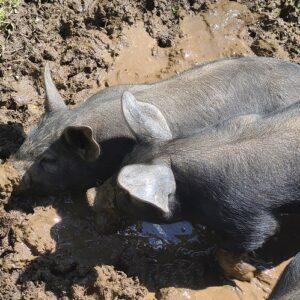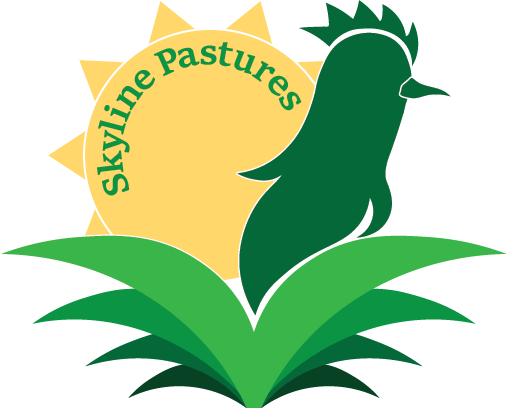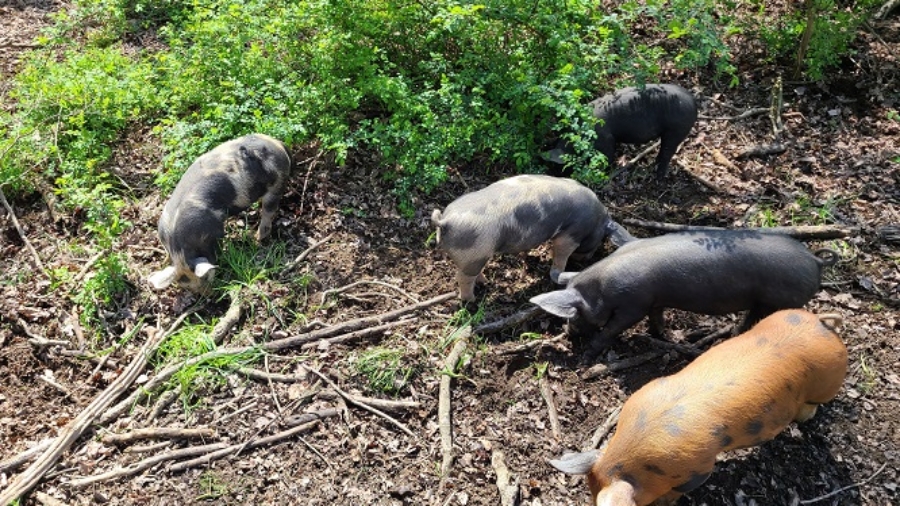Hi Everyone!
The Silvopasture Pig Project is going according to plan (which is exciting and a bit surprising). We did have to make a few adjustments based on changes to the paddock-shift plan as well as getting the piglets almost a month earlier than planned but fortunately, we have a lot of flexibility built into the plan! Originally, we were going to get piglets with Duroc/Yorkshire cross genetics because of their ability to rapidly pack on the pounds (high feed conversion rate) but due to a disease that affected that farm we had to jump through hoops to find any piglets we could. Thankfully we were able to source piglets from Pig Hollow Farms in York, PA (the same place we got piglets last year) and now have 12 happy piglets making mud in Paddock 1. These pigs have primarily Large Black genetics with some Berkshire and Duroc mixed in which gives us a nice mix of brown, black and possum-colored pigs to raise. If you would like to know more about our project and NE SARE (the organization funding it) please go to https://northeast.sare.org/ and look up project FNE23-053.

Over the past couple days, we have gotten a ton of rain which has made much of Paddock 1 a muddy mess. We made a short 2 minute video of Paddock 1 which you can view here. Although it looks like the pigs are damaging the landscape, we have seen this before with our previous 2 years of pigs and the land will recover and visibly improve as soon as we rotate the pigs to paddock 2. They have a couple more weeks to go in Paddock 1 and as long as we keep shifting the location of their waterers and feeder, we should leave this paddock better than we found it. Once the pigs move to the next paddock, we will heavily seed the bare spots with a seasonally and shade-level appropriate pasture seed mix and take before and after photos to add to our data. We will also take follow up soil tests of all the paddocks after the pigs are processed in October to show their effect on fertility. This year’s paddock rotation will encompass about 3 acres for 12 pigs, and we expect the data to show improvement to plant species variety and soil fertility, while showing little to no negative soil compaction.
Please continue to follow us through our project and if you know of anyone with some unused woods or pasture space that would be interested in raising their own pork, please direct them to Skyline Pastures so that they can see what we are doing and replicate or improve upon it! We intend to publish updates to our Silvopasture Pig Project every other week so that the data collection is as rich as possible. Thanks again!
-CJ and Tanya
This material is based upon work supported by the National Institute of Food and Agriculture, U.S. Department of Agriculture, through the Northeast Sustainable Agriculture Research and Education program under subaward number FNE23-053.

